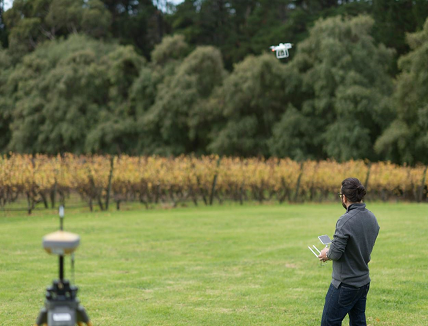
GMV, FrontierSI, Ericsson and Optus and industry demonstration partners Kondinin, Platfarm and Position Partners have joined their efforts to demonstrate 5G-based LTE Positioning Protocol (LPP) capabilities in field trials as part of the 5G Positioning Testbed, a project funded under the Australian Government 5G Innovation Initiative. The results achieved by the project are considered a key step forward for the use of 5G-based High Accuracy Positioning. The testbed demonstrated each of the high accuracy GNSS-based LPP working modes, including Observation Space Representation (OSR), State Space Representation (SSR), and SSR with atmospheric corrections, integrated directly with user equipment supplied by demonstration partners to examine a variety of real-world applications. The field trials demonstrated that the solution can reach centimetre-level accuracy with fast convergence times using a commercial off-the-shelf receiver and antenna hardware.
GNSS Precise Positioning is the most common technology currently used to calculate an absolute positioning solution at the user level. For uses requiring centimetre level accuracy, it is often required to provide GNSS corrections to reduce the typical errors existing in the broadcast navigation message and positioning calculation. In recent years, the distribution of GNSS corrections is based on either the broadcast of Precise Point Positioning (PPP) corrections through GEO satellites over the L-band, or the point-to-point transmission of Real-Time Kinematic (RTK) corrections using NTRIP through the Internet. Both options have their drawbacks; GEO satellite broadcast requires complex ground infrastructure and can be expensive to maintain, while NTRIP distribution has poor scalability due to the point-to-point connections required for every user.
5G-based LTE Positioning Protocol
3GPP (3rd Generation Partnership Project) the standards organization focusing on 5G LPP, has recently introduced the support of OSR corrections for RTK users in Release 15, and the support of SSR plus atmospheric corrections for PPP/PPP-RTK users in Release 16. Support for these two approaches to high accuracy GNSS positioning have increased interest in 5G-based LTE Positioning Protocol as a potential alternative to existing correction services. Service providers and positioning consumers can now consider the use of 5G LPP as a supporting technology in the provision of new positioning services directly through mobile networks.
The 5G Positioning Testbed has achieved end-to-end demonstrations of high-accuracy positioning solutions using GMV’s Corrections Service and Positioning Engine, delivered through the Optus 5G network using Ericsson network technology, to user equipment designed and operated by FrontierSI. Field trials were conducted in Australia by the project demonstration partners operating in their respective industries and involved real-world scenarios across three areas where precise positioning is a key and challenging component: precision agriculture, drone operation and augmented reality.
This end-to-end solution was made possible through close collaboration between the Technology partners, GMV, FrontierSI, Optus and Ericsson.
Ericsson has supported the trial with its 5G network technology: “Ericsson’s 5G network technology sits at the centre of this 5G Precise Positioning Testbed trial, the first of its kind in Australia and Southeast Asia. The proof of concept (POC) trial sees the Ericsson 5G infrastructure in Optus’ national network act as the data conduit between the global positioning correction service provided by GMV, which taps into the global navigation satellite system (GNSS). Ericsson’s positioning and assistance data distribution system employs the corrected GNSS global positioning information to provide highly accurate location data for the testbed trial being carried out by FrontierSI, enabling end users to achieve location positioning accuracy through their mobile network of under ten centimetres using supported devices. This trial contributes to enabling the mass market adoption of the high precision positioning, based on scalable distribution of the assistance data, and allows the cellular operator to offer this as a service to a subscribing device.”
The performance obtained in this project shows the potential for 5G-based LTE Positioning Protocol as a future infrastructure for the distribution of corrections data required by a wide range of demanding industrial applications, with particular promise for IOT and system automation use cases. “The successful proof of 5G LPP in field testing combined with the expected growth of the 5G networks in the coming years are a vector for a future change in the way high-accuracy GNSS services are provided. 5G LPP closes the gap between GNSS high accuracy positioning providers and users making the service quickly and easily accessible for new millions of users” stated David Calle, High Accuracy Service Manager at GMV.


















